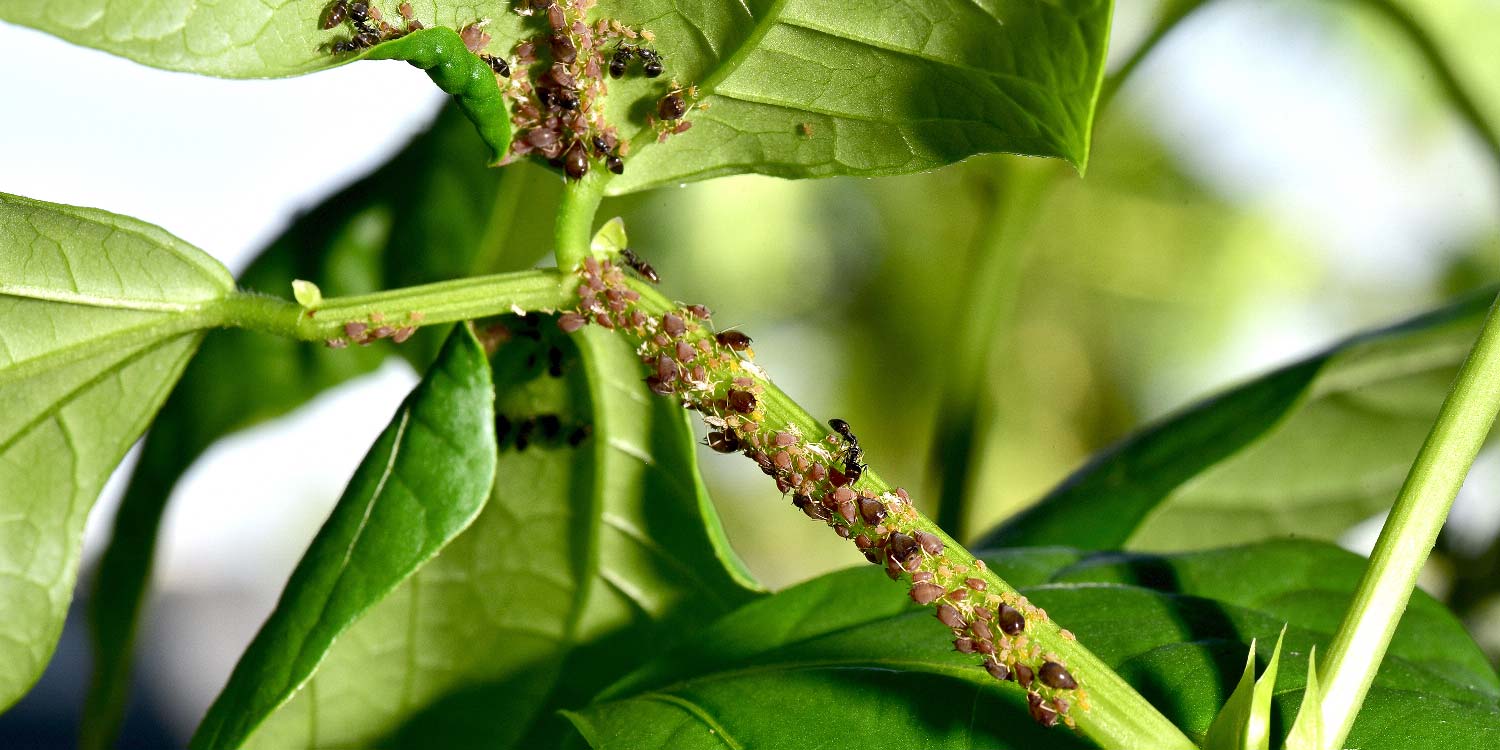The bean aphid is a dark green to dark gray soft-bodied insect oftenly found in dense clusters on tender new growth.
It belongs to the family Aphididae, and is among the most destructive insect pests, which uses its piercing sucking mouthpart to feed on plant sap.
The prolific reproductive capabilities of bean aphid has made it a notorious enemy of farmers and gardeners.
LIFE CYCLE
Reproduction of bean aphid is entirely or nearly entirely parthenogenetic, whereby, the adult female aphids give birth directly to smaller aphids, instead of first laying eggs.
If eggs are laid, they hatch producing wingless female aphids which after some time begin parthenogenetically reproducing.
Newly born aphids are capable of reproducing within about a week.
IDENTIFICATION
Bean aphids are small (often invisible to the naked eye), and the nymphs resemble the adults.
They are about 2mm long with globular soft bodies, have light-colored legs with darker “knees” and “ankles”, twin “jet-pipe” cornicles, olive-green to black bodies, and may or may not have wings.
They have piercing and sucking mouthparts, which are used to obtain plant juices.
FEEDING & DAMAGE
Bean aphids cause direct damage to the crop by sucking its sap and indirect damage through transmission of viruses like BWY virus, which affect crop performance.
Infested plant have the following characteristics;
- Leaf curling and distortion, especially young leaves at the center of the crown
- Dense aphid colonies on the underside of leaves and white cast skins from prior generations
- Leaf yellowing and wilting, initially along the edges
- Honeydew and black sooty mold
MANAGEMENT STRATEGY
This is aimed at minimizing initial colonization and establishment and slowing the rate of increase once established.
Bean aphids multiply very fast and should therefore be controlled before they start reproducing, for effectiveness.
There are several methods which can be employed in managing and/or controlling the pests, which include the following;
Chemical control
This involves the use of insecticides.
The following insecticides have both contact and systemic properties and therefore very effective against bean aphids.
- AMAZING TOP 100WDG 5g/20l
- BACIGUARD 16WDG 15g/20l
- EMERALD 200SL 10ml/20l
- EMERALD GOLD 700WDG 5g/20l
- EPITOME ELITE 500SP 10g/20l
- KINGCODE ELITE 50EC 10ml/20l
- LEXUS 247SC 8ml/20l
- LOYALTY 700WDG 5g/20l
- PENTAGON 50EC 10ml/20l
- PRESENTO 200SP 5g/20l
- PROFILE 440EC 30ml/20l
- SINOPHATE 750SP 20g/20l
- TAURUS 500SP 10g/20l
Non- chemical method
- Clip off and compost stems holding aphid clusters.
- Use beneficial insects including lady beetles and lacewings, which are important aphid predators.
- Try spraying cold water on the leaves, as a cool blast dislodges the aphids.
- Dusting the plants with flour constipates the pests.
- Practise rotations with non-host crops
- Plant resistant varieties
- Maintain field hygiene/sanitation
- Ensure proper weed control
Note;
- Although aphids are easily controlled using insecticides, it is advisable to alternate various chemicals within a crop season. This prevents resistance build up by the pest against either of the insecticides.
- Insecticides should be mixed with INTEGRA 3ml/20l whenever spraying. This is a sticker, spreader and penetrant which enhances the effectiveness of the chemical.
- JAMBO CLEAN 100ml/20l is used to clear the sooty mold.
- Timely control of the pests is very crucial






